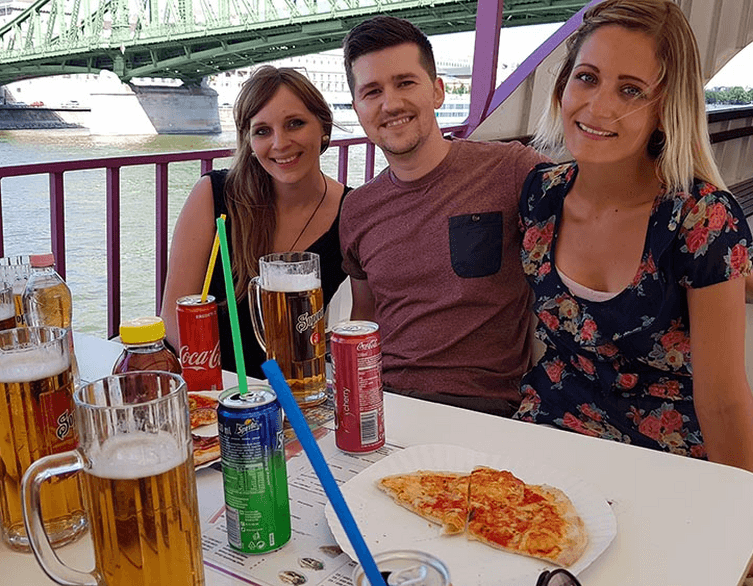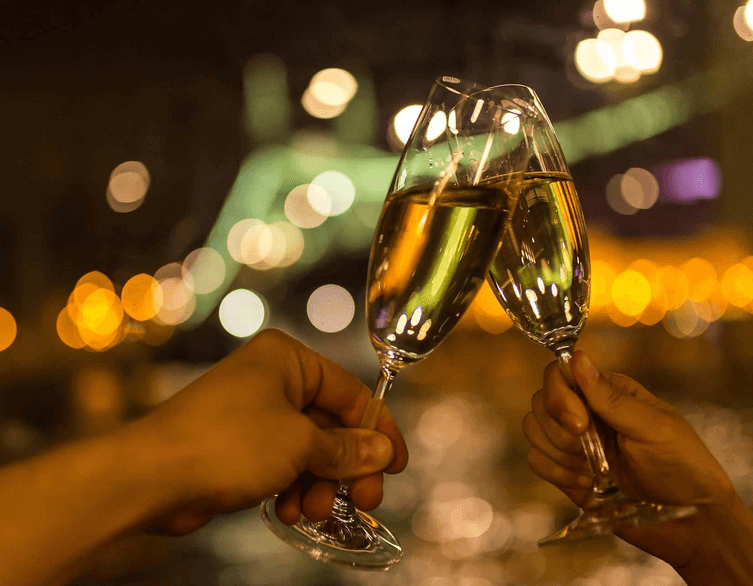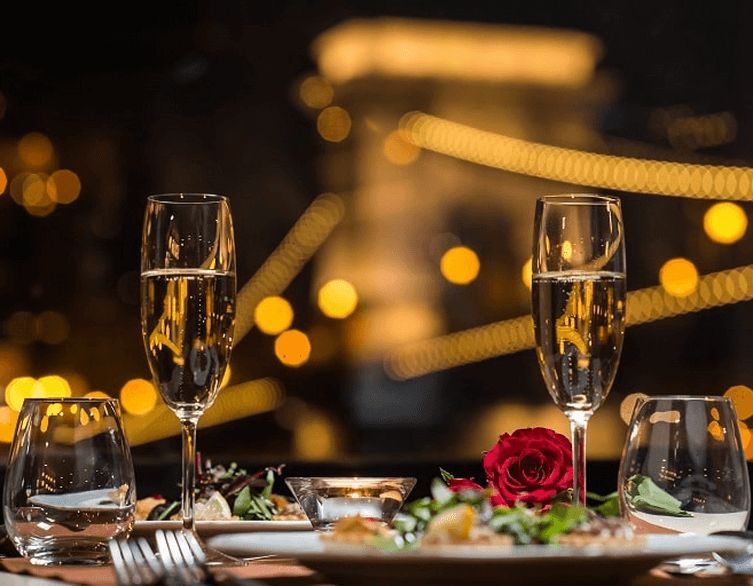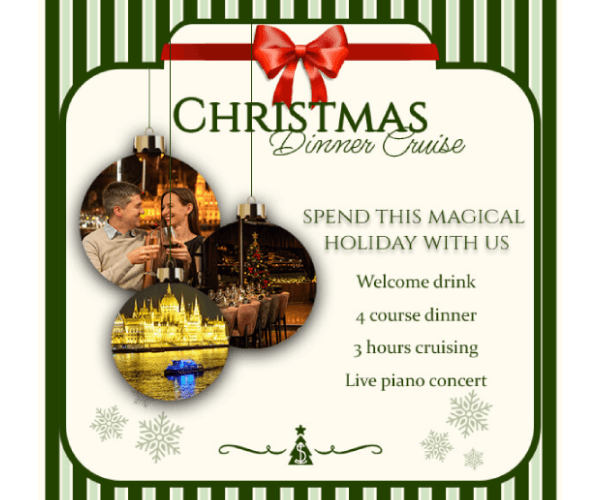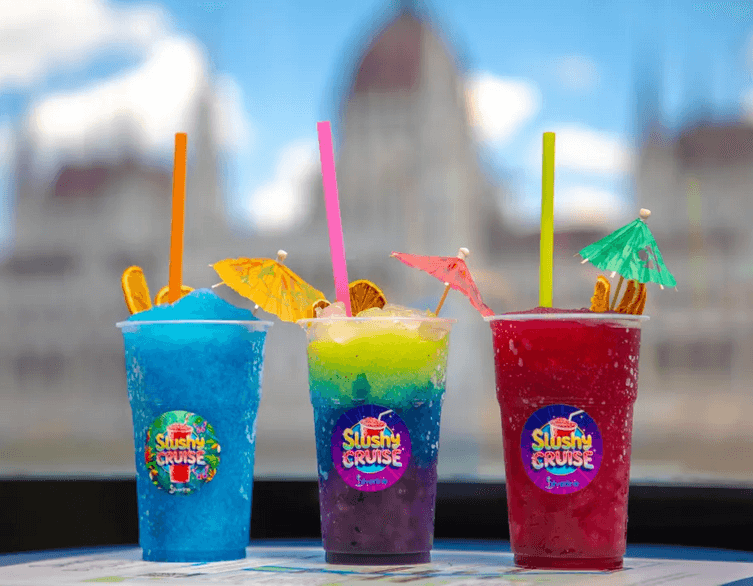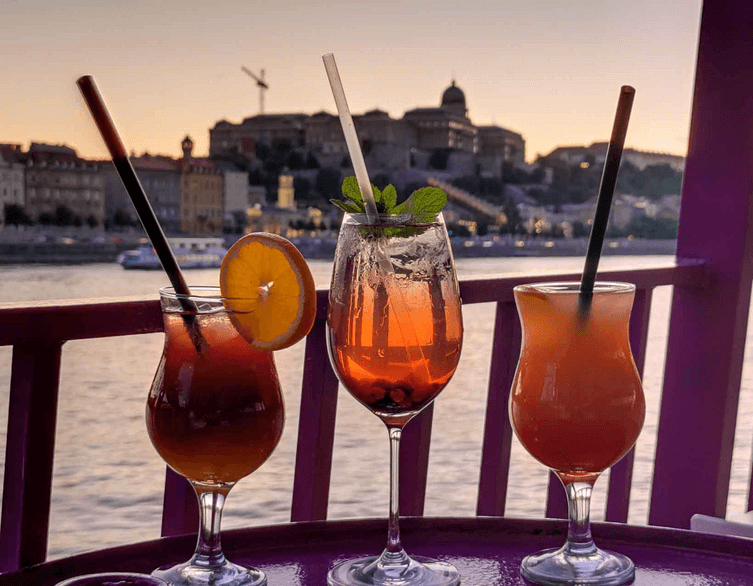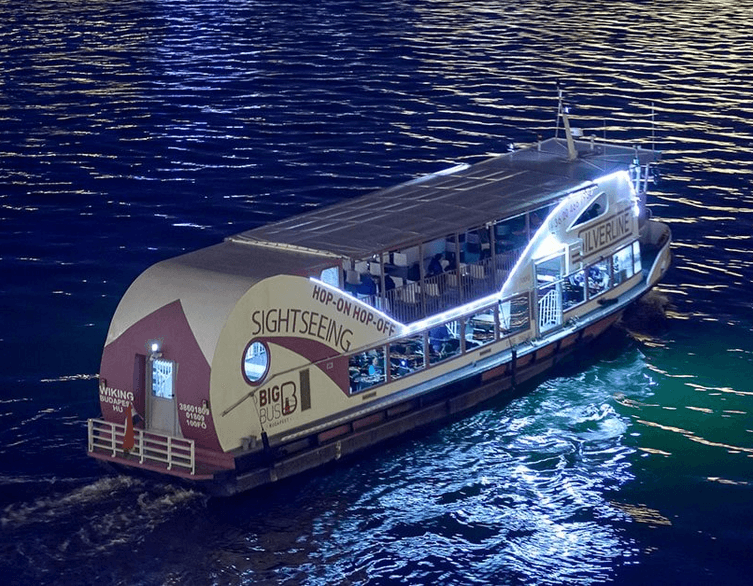Christmas and Winter in Budapest 2025: Your Essential Guide to the Festive Season
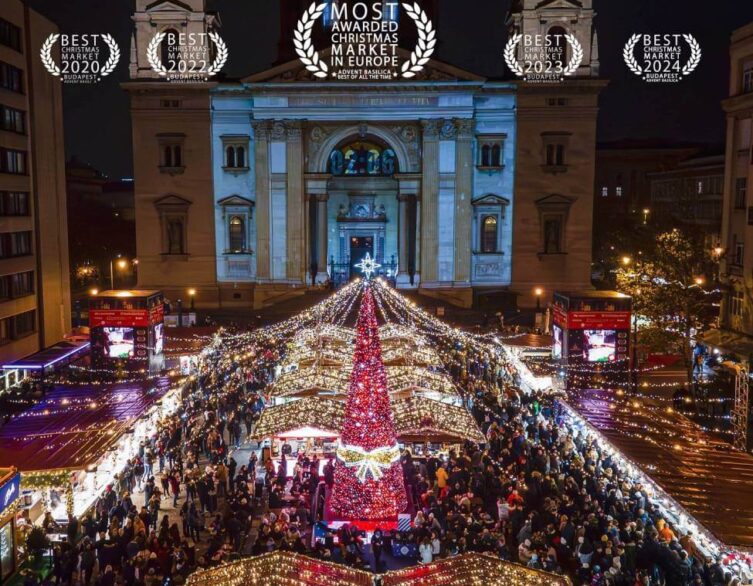
Budapest transforms into a captivating winter wonderland from mid-November through early January, where centuries-old Hungarian Christmas traditions blend seamlessly with magical festive markets, spectacular light displays, and the unique pleasure of soaking in outdoor thermal baths while snowflakes drift around you. For foreign visitors, experiencing Christmas and winter in Budapest offers an enchanting journey through one of Europe’s most beautiful capitals during its most atmospheric season.
This guide covers the essential topics you need to plan your winter Budapest experience, from Christmas markets and winter activities to practical tips about weather, transportation, and celebrating the holidays as a tourist. Each section provides an overview with links to detailed guides for deeper planning.
Understanding Hungarian Christmas Traditions
Before diving into activities and attractions, understanding how Hungarians celebrate Christmas will enrich your experience and help you appreciate the cultural significance behind Budapest’s festive celebrations.
Christmas in Hungary centers around family gatherings and deeply rooted customs that differ meaningfully from Western European and American celebrations. The main celebration occurs on Christmas Eve (December 24th) rather than Christmas Day, when families gather for the year’s most important meal. Hungarian Christmas Eve traditionally begins with fasting until evening, when the feast commences with halászlé (fisherman’s soup) followed by töltött káposzta (stuffed cabbage rolls).
According to tradition, “little Jesus” brings the Christmas tree and presents, which magically appear while the family attends church or takes a walk. Children open presents on Christmas Eve rather than Christmas morning. December 25th and 26th are both public holidays dedicated to visiting extended family and attending church services—a quieter, more intimate period than the commercial bustle familiar in many Western countries.
Christmas Markets in Budapest
Budapest’s Christmas markets rank among Europe’s finest, transforming historic squares into festive wonderlands of twinkling lights, traditional crafts, and delicious seasonal treats.
The city’s Christmas markets generally operate from mid-November through early January, offering wooden stalls adorned with Christmas decorations, Hungarian crafts made by local artisans including embroidered textiles, hand-painted ceramics, and carved wooden toys. Markets feature authentic Hungarian specialties like kürtőskalács (chimney cake), roasted chestnuts, gingerbread, traditional sausages, and the beloved forralt bor (mulled wine).
The main markets include Vörösmarty Square (Budapest’s largest and most traditional), Advent at St. Stephen’s Basilica (featuring stunning nightly light projections), City Hall Park Winter Festival (with a giant Advent wreath and ice skating), and the Magical Advent at Fisherman’s Bastion in Buda Castle. Each market offers a unique atmosphere—from old-world charm to spectacular architectural settings.
Most markets operate daily from 10:00-11:00 AM to 9:00-10:00 PM, with reduced hours during the Christmas holidays (December 24-26). The markets combine entertainment with shopping, hosting concerts, dance performances, children’s activities, and special ceremonies like the Advent candle lighting every Sunday before Christmas.
Winter Outdoor Activities
Budapest offers numerous outdoor winter activities that allow you to embrace the season while enjoying the city’s natural beauty and unique landscapes.
Ice skating is a beloved winter tradition in Budapest. The City Park Ice Rink (Városligeti Műjégpálya) is one of Europe’s largest outdoor skating rinks, operating from mid-November through mid-February against the fairytale backdrop of Vajdahunyad Castle. Additional skating opportunities exist at the Christmas markets at St. Stephen’s Basilica and City Hall Park.
Winter walks and hiking in the Buda Hills provide excellent opportunities with trails through forests and stunning viewpoints overlooking the city. Margaret Island transforms into a peaceful winter retreat with car-free paths perfect for walking, jogging, or cycling even in cold weather. The Danube Promenade offers spectacular views of illuminated landmarks including Buda Castle, Chain Bridge, and Parliament—especially beautiful on crisp winter evenings.
The MOL Bubi public bike-sharing system operates year-round for adventurous winter cyclists, though there will be a short break in the service during this winter. Photography enthusiasts will find unique winter opportunities with snow-dusted architecture, misty Danube views, and dramatic light at iconic locations.
Winter Indoor Activities
When Budapest’s winter chill becomes too much, the city offers exceptional indoor experiences that are equally memorable.
Experiencing Budapest’s thermal baths in winter ranks among the city’s most unique activities. Soaking in 38°C thermal waters while snow falls around you creates an almost surreal contrast of sensations. Széchenyi Thermal Bath, the largest and most famous, features outdoor pools that maintain warm temperatures year-round, creating dramatic steam clouds in cold winter air. Rudas Thermal Bath offers a rooftop hot tub with breathtaking panoramic city views, while Lukács Thermal Bath provides medicinal springs with authentic local atmosphere. Note that Gellért Thermal Bath closed in October 2025 for extensive renovations and won’t reopen until 2028.
Museums and cultural attractions provide rich indoor experiences, while historic coffee houses like Café Gerbeaud, New York Café, and Central Café offer elegant environments for warming up between outdoor activities. The city’s famous ruin pubs in the Jewish Quarter and shopping centers provide additional indoor entertainment options.
Christmas and Winter Events
Budapest’s cultural scene flourishes during winter with special performances and events that enhance the festive atmosphere.
Adults can enjoy opera and ballet performances at the Hungarian State Opera House, including classic productions like The Nutcracker and festive opera selections. Churches across Budapest, particularly St. Stephen’s Basilica and Matthias Church, host classical Christmas concerts featuring works by Hungarian composers like Liszt and Kodály alongside international Christmas favorites. Traditional Hungarian folk performances showcase cultural heritage at various venues throughout the season.
Family-oriented events include puppet shows, nativity plays, and children’s entertainment at the Christmas markets. The Magic Grove market at Vajdahunyad Castle specifically caters to families with children. Lumina Park on Margaret Island features over 200 spectacular light installations inspired by famous films, with interactive games and quizzes entertaining the whole family.
Special seasonal experiences include the Christmas Tram Ride on Tram Number 2, decorated in festive livery for special rides along the Danube on select December days—National Geographic calls this “Europe’s most scenic tram journey.” The official lighting of Budapest’s Christmas lights occurs on the first Sunday of Advent when the city center illuminates simultaneously in a magical transformation.
Light Shows and Installations
Budapest sparkles with enchanting light displays throughout winter, adding magic to already beautiful surroundings.
The St. Stephen’s Basilica light projections occur every evening during the Christmas market period, transforming the church’s facade into a canvas of moving kaleidoscopic colors and patterns. These digital projections are free to watch and create one of Budapest’s most photographed winter scenes, with shows running every half hour.
Lumina Park on Margaret Island transforms the Palatinus Bath area into a magical world of light and art with over 200 spectacular LED installations created by artists from across Europe. The 2025-2026 season features themes inspired by popular films including Frozen, Tarzan, Pocahontas, Narnia, King Kong, and Pirates of the Caribbean. The approximately one-hour experience includes interactive games, film-themed quizzes, and stunning displays accompanied by music.
City Hall Park features a visual painting show projected onto the back wall of the Lutheran Church, telling Budapest’s history from Roman times. The entire city center’s festive lighting creates a warm, sparkling atmosphere throughout the winter season.
Read the detailed guide: “Light Up Your Budapest Winter: The City’s Most Dazzling Evening Events”
Winter and Christmas Food in Budapest
No Budapest Christmas experience is complete without sampling the traditional foods and drinks that define the season.
Traditional Christmas dishes form the centerpiece of Hungarian holiday celebrations. Halászlé (fisherman’s soup), a spicy, paprika-infused fish soup made with carp, pike, or perch, traditionally opens Christmas Eve dinner. Töltött káposzta (stuffed cabbage rolls filled with rice and minced meat) follows. The most beloved Christmas dessert is beigli, a rolled pastry traditionally filled with poppy seed or walnut, though modern variations include chestnut, almond, and pistachio.
At the Christmas markets, forralt bor (Hungarian mulled wine made with red wine, cinnamon, cloves, star anise, citrus, and sugar) is the quintessential drink, served steaming hot in ceramic mugs you can often keep as souvenirs. Kürtőskalács (chimney cake) is a cylinder-shaped spit cake wrapped around a wooden spool, grilled over charcoal, and rolled in sugar, cinnamon, nuts, or coconut—the outside caramelizes while the inside remains soft and warm. Lángos (deep-fried flatbread) appears at every Christmas market, classically topped with sour cream and grated cheese.
Hungarian Christmas desserts and festive sweets represent a rich culinary tradition, with bakeries across Budapest offering their versions from early December through the holidays.
Christmas Shopping in Budapest
Budapest’s Christmas markets and shopping districts offer excellent opportunities to find unique gifts and authentic Hungarian products.
The Christmas markets specialize in handcrafted items from local artisans, including embroidered textiles, hand-painted ceramics, carved wooden toys, traditional Christmas decorations, and local honey. These authentic Hungarian crafts make meaningful souvenirs and gifts. Shopping at the markets supports local craftspeople and provides items you won’t find elsewhere.
Beyond the markets, Budapest’s shopping districts offer additional opportunities, though visitors should note that shops typically close early on December 24th and remain closed on December 25-26. The best handcrafted items at markets sell out as Christmas approaches, so early December shopping ensures the widest selection.
Romantic Experiences for Couples
Budapest’s winter season creates particularly romantic atmospheres perfect for couples seeking memorable experiences.
Soaking together in thermal baths while snow falls around you offers an intimate and unique experience. The rooftop hot tub at Rudas Thermal Bath provides breathtaking panoramic city views, especially stunning on winter evenings when Budapest’s lights sparkle. Ice skating at the small rink in front of St. Stephen’s Basilica, with the illuminated church as your backdrop and nightly light shows, creates a magical romantic setting.
Evening Danube cruises showcase the city’s illuminated beauty from the river, passing landmarks including Parliament, Buda Castle, Chain Bridge, and Gellért Hill. Walking along the Danube Promenade at night, with views of the lit Parliament building and Chain Bridge, provides a romantic conclusion to winter days. Budapest’s historic coffee houses offer elegant environments for intimate conversations over coffee and traditional pastries.
Winter Weather and How to Prepare
Budapest’s winter weather requires proper preparation to stay comfortable while exploring the city’s festive offerings.
Winter in Budapest (December-February) brings cold temperatures with frequent gray skies, though the city’s beauty shines through even in gloomy weather. December temperatures typically range from 2-6°C (36-43°F) during the day and -2 to 2°C (28-36°F) at night. January sees 0-4°C (32-39°F) days and -4 to 0°C (25-32°F) nights. February warms slightly to 3-8°C (37-46°F) days and -2 to 2°C (28-36°F) nights. Snow is possible throughout winter, with January typically seeing the most, while rain can occur on warmer days.
Essential packing includes a heavy winter coat (preferably waterproof), multiple layers including thermal underwear and sweaters, a warm hat, scarf, insulated gloves, and waterproof winter boots with good traction for icy sidewalks. Don’t forget a swimsuit and flip-flops for thermal baths, an umbrella, hand warmers for extended outdoor activities, and moisturizer and lip balm for dry indoor heating conditions.
Getting Around: Public Transportation
Budapest’s extensive public transport system operates reliably throughout winter, making it easy and affordable to navigate the city.
Best deals of Budapest
The metro, tram, and bus network covers all major attractions, with four metro lines (M1-M4) serving key locations. The scenic Tram 2 runs along the Danube offering spectacular views of Parliament and Chain Bridge, while Tram 4/6 represents one of the world’s longest urban tram routes. Night buses (designated with numbers starting with 9) operate after metro services end around 11:30 PM, running approximately every 15-30 minutes.
Purchase tickets from metro stations, newsstands, tobacconists, or through the BudapestGO app for digital tickets with real-time journey planning, service updates, and route recommendations. On December 24-26 and January 1, public transport operates on reduced Sunday/holiday schedules, so plan extra time for journeys on these dates.
The major Christmas markets at Vörösmarty Square, St. Stephen’s Basilica, and City Hall Park are all within walking distance of Deák Ferenc tér metro hub, making them easily accessible. Download the BudapestGO app for real-time information and allow extra time during rush hours and around Christmas markets in evenings.
Holiday Opening Hours and Closures
Planning your visit around holiday schedules ensures you make the most of your time in Budapest.
On Christmas Eve (December 24th), most shops close early (around noon to 2:00 PM) or remain closed entirely. Restaurants have varying schedules—many close for the holiday while some tourist-oriented establishments remain open with special menus. Christmas markets operate with reduced hours, typically 10:00 AM to 2:00-3:00 PM. Thermal baths remain open with normal hours.
Christmas Day (December 25th) and Boxing Day (December 26th) are national public holidays when most shops, supermarkets, and shopping malls are closed. Christmas markets operate with reduced hours (typically 11:00 AM to 6:00-8:00 PM depending on the market). Thermal baths typically remain open while museums may be closed or operate with reduced hours. Public transport operates on holiday schedules.
Most services return to normal operations on December 27-30, making this an excellent time to visit as crowds thin but the festive atmosphere remains. Always check websites or call ahead for December 24-26 and January 1 schedules.
Celebrating Christmas as a Tourist
While Christmas Eve and Christmas Day are primarily family-oriented in Hungarian culture, tourists have several wonderful options to celebrate.
Festive Danube cruises provide elegant alternatives that combine sightseeing with celebration. Multiple operators offer Christmas Eve dinner cruises (December 24) departing around 7:00-7:30 PM, with options including four-course served dinners with welcome prosecco and live piano music, or buffet-style dinners with unlimited drinks and live music. Similar dinner cruise options operate on Christmas Day (December 25) and Boxing Day (December 26), offering sophisticated ways to celebrate while experiencing Budapest’s illuminated beauty from the river.
Many upscale hotels offer special Christmas Eve and Christmas Day dinners open to non-guests, typically featuring multi-course menus combining Hungarian traditions with international cuisine, live music, and elegant settings. Even on December 24-26 when markets operate with reduced hours, they remain open and offer festive atmosphere, warm drinks, and traditional foods, providing a social, public way to experience Christmas.
Booking and Reservations Tips
Strategic advance planning ensures you secure the best experiences during Budapest’s popular winter season.
Book thermal bath visits online for discounts and skip-the-line access, and consider visiting in early morning (opening time) or late evening to avoid peak crowds. Christmas dinner cruises sell out quickly—reserve at least 2-3 weeks in advance for Christmas Eve and Christmas Day experiences. Popular restaurants fill rapidly during the Christmas period, so book at least one week in advance for special dining experiences.
For Christmas market shopping, visit in late November or early December when the best handcrafted items are still available, as selection diminishes as Christmas approaches. Hotels in central locations near Christmas markets book early for the holiday period—secure accommodations several months in advance if traveling during peak Christmas dates.
Opera and ballet performances, particularly special Christmas productions like The Nutcracker, require advance booking for preferred dates and seating. Most attractions and experiences can be booked online through official websites or trusted platforms.
Sustainable and Eco-Friendly Winter Travel Tips
Enjoying Budapest’s winter season responsibly helps preserve the city’s beauty and supports sustainable tourism practices.
Budapest’s excellent public transport system represents the most sustainable way to navigate the city—purchase multi-day travel cards for unlimited rides rather than relying on taxis or car services. The metro, trams, and buses efficiently connect all major attractions while minimizing environmental impact. Walking between nearby attractions and Christmas markets reduces carbon footprint while allowing you to appreciate the city’s architecture and atmosphere.
At Christmas markets, bring reusable bags for purchases, as many vendors don’t provide bags, especially for crafts and food items. Some markets offer reusable cup programs for drinks—inquire at stalls and return cups for deposit refunds to reduce waste. Support local artisans by purchasing authentic Hungarian handicrafts rather than mass-produced souvenirs, ensuring your money benefits local craftspeople and traditional skills.
Choose water bottle refills at cafes and restaurants rather than purchasing single-use plastic bottles. When visiting thermal baths, follow water conservation guidelines and avoid leaving water running unnecessarily. Consider staying in eco-certified accommodations that prioritize sustainable practices.
Winter Photography Opportunities
Budapest’s winter season provides unique photographic opportunities with snow-dusted architecture, misty Danube views, and dramatic light.
Iconic winter photo locations include Fisherman’s Bastion at sunrise with snow, offering panoramic views of the Danube and Pest side with fairytale architecture. Parliament viewed from the Buda side during blue hour (twilight) creates stunning compositions with the building’s illumination reflecting in the Danube. Chain Bridge from either end or from boat perspective provides classic Budapest imagery, especially magical in winter.
Thermal baths with steam rising in cold air create dramatic atmospheric shots, particularly at Széchenyi with its Neo-Baroque architecture. Christmas markets in evening with twinkling lights and the St. Stephen’s Basilica light show offer spectacular photo opportunities. The basilica light projections, running every half hour during winter evenings, create kaleidoscopic patterns perfect for photography.
The best times for winter photography include golden hour (shortly after sunrise and before sunset), blue hour (twilight periods), and night when landmarks are illuminated. Winter fog along the Danube adds atmospheric mystery to compositions.”
Viewpoints and Panoramic Spots
Budapest’s dramatic topography provides numerous viewpoints where winter landscapes create unforgettable panoramas.
Fisherman’s Bastion in Buda Castle offers one of the city’s most famous viewpoints, with panoramic vistas of the Danube, Parliament, and the Pest side. The fairytale Neo-Romanesque architecture creates a perfect frame for winter photographs, especially beautiful when dusted with snow. Gellért Hill and the Citadel provide the highest central viewpoint, with 360-degree views of the entire city. The climb rewards visitors with spectacular winter panoramas, particularly at sunset and after dark when city lights sparkle.
Buda Castle itself serves as an excellent viewpoint, with crisp winter walks offering beautiful city vistas. The castle area includes multiple museums and attractions that can be combined with viewpoint visits. Parliament viewed from the Buda side of the Danube provides classic perspectives, with the building’s illumination creating stunning reflections in the river.
Margaret Bridge offers mid-river perspectives of both Buda and Pest sides, while the Danube Promenade provides ground-level views of illuminated landmarks from the riverbank. Elisabeth Lookout Tower and János Hill (Budapest’s highest point at 527 meters) in the Buda Hills offer expansive winter panoramas, accessible via the Cogwheel Railway.
What NOT to Do: Common Mistakes to Avoid
Learning from common tourist mistakes helps you maximize your Budapest winter experience while avoiding frustration.
Don’t underestimate Budapest’s winter cold—inadequate clothing leads to discomfort that cuts experiences short. Icy sidewalks are common, so inappropriate footwear (smooth-soled shoes) creates safety hazards. Arrive at thermal baths prepared with swimsuits and flip-flops, as rental or purchase on-site adds unnecessary expense.
Avoid visiting major Christmas markets during peak weekend afternoons when crowds make movement difficult and detract from the experience—early mornings or weekday visits provide better atmospheres. Don’t assume everything remains open during Christmas holidays (December 24-26)—always check schedules in advance to avoid disappointment.
Never put valuables in back pockets or outer bag compartments at crowded Christmas markets, as pickpockets target distracted tourists. Don’t exchange currency at airport kiosks or tourist areas where rates are unfavorable—use official banks or ATMs for better exchange rates. Avoid unlicensed taxis; instead use official services like Főtaxi, Bolt, or Uber.
Don’t expect to accomplish too much on public holidays when reduced transport schedules and closures require extra planning time. Avoid booking last-minute for popular experiences like Christmas cruises or thermal bath peak times, as availability fills quickly. Don’t skip booking accommodations well in advance if traveling during peak Christmas dates—central locations near markets book months ahead.
How to Spend a Perfect Winter Day in Budapest
Here’s a recommended framework for experiencing the best of Budapest’s Christmas and winter offerings, adaptable to your interests and energy levels.
Start your morning at Széchenyi Thermal Bath (opening at 9:00 AM), arriving early to beat crowds and experience the magical contrast of steaming thermal waters against cold morning air. Spend 2-3 hours relaxing in outdoor pools, trying saunas, and enjoying Neo-Baroque architecture—the morning light creates beautiful photo opportunities with steam rising from the pools.
For lunch, walk through City Park to nearby cafes or restaurants, or head to a Christmas market for traditional Hungarian market foods. Take the metro from City Park to Vörösmarty Square Christmas Market, spending time browsing authentic Hungarian crafts, sampling chimney cake and roasted chestnuts, and soaking in festive atmosphere. Walk along Váci Street to admire Christmas decorations and window displays, then continue to St. Stephen’s Basilica (10-minute stroll) to explore that Christmas market.
At dusk, watch the St. Stephen’s Basilica light projections begin—the kaleidoscopic displays transform the church facade into a stunning visual spectacle every half hour. Consider ice skating at the small rink in front of the Basilica for a romantic winter experience. Walk to nearby City Hall Park Winter Festival to see the giant Advent wreath and visual shows, warming up with forralt bor (mulled wine).
For dinner, choose from traditional Hungarian restaurants, or if it’s December 24-26, consider a Christmas dinner cruise on the Danube (booked in advance). End your day with a walk along the Danube Promenade to see illuminated Parliament, Chain Bridge, and Buda Castle—nighttime views are spectacular in winter.
Christmas Magic in Budapest
Christmas and winter in Budapest reveal Hungarian culture at its most authentic and welcoming, where reverence for tradition balances beautifully with modern urban sophistication. From thermal baths steaming under winter skies to Christmas markets glowing with festive lights, from centuries-old traditions to contemporary celebrations, Budapest offers foreign visitors an unforgettable winter destination in the heart of Central Europe.
The city’s Christmas markets aren’t merely tourist attractions but genuine expressions of Hungarian craftsmanship, culinary tradition, and community gathering. The emphasis on family feasts and intimate celebrations reflects values that prioritize personal connections, while the welcoming atmosphere ensures visitors feel included in the seasonal magic.
Planning ahead for the holiday period ensures you experience the best of what Budapest offers during this special season. Use this guide as your starting point, then explore the detailed guides linked throughout to plan specific aspects of your winter Budapest adventure. Whether you’re seeking romantic experiences, family activities, cultural immersion, or simply the beauty of a historic city transformed by winter and festive lights, Budapest delivers an enchanting experience you’ll treasure long after returning home.



